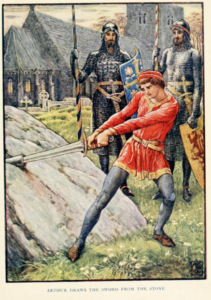These are the articles recently published. Original replies, which can start off a debate, are listed with their abstracts. Please note that responding articles do not have separate abstracts.
11/03/2025:
For a More Comprehensive Approach: A Response to Thomas Kullmann’s “Anthologizing Shakespeare’s Sonnets”
Roland Weidle, Connotations, Vol. 34: 289-298.
Abstract
Responding to Thomas Kullmann’s model of communicative modes to explain the popularity of why some of Shakespeare’s sonnets have been preferred over others in anthologies, this article proposes expanding Kullmann’s approach into a more comprehensive model that also takes into consideration the sonnets’ thematic, aesthetic, formal, and rhetorical features. After summarizing Kullmann’s main arguments, the response addresses what I believe to be some of the model’s problems in its interpretation of data, its methodology, and argumentation. Based on a more sustainable interpretation of Kullmann’s data, a more comprehensive approach is suggested that also focuses on a sonnet’s thematic concerns, its stylistic sophistication, and whether and how it communicates emotional states and experiences that readers can relate to. Of equal relevance to a sonnet’s popularity is its place in the sequence and the question whether it continues an argument from a previous sonnet or can be understood as a stand-alone poem. Lastly, the degree to which a sonnet exhibits “passionate rationality” (Burrow 91) is also a significant factor in its popular appeal.
10/27/2025:
Approaching Canonicity through a Digital Inventory of Exempla: A Response to William E. Engel
Grant Williams, Connotations, Vol. 34: 275-288.
Abstract
My response offers an alternative to Engel’s metacognitive view by exploring how the rhetorical device of the exemplum illuminates the problem of canonicity. The pitfall of canonicity is, simply put, the exclusion of marginalized voices from a literary collection. When Engel, Loughnane, and I selected the passages for our anthology The Death Arts in Renaissance England, our fear of this pitfall did not arise from expecting ideological lapses, but from the limitations of the inductive method, that which scholars, to some degree or another, strive to implement when selecting texts. I argue that one can avoid such fear of leaving someone out by conducting an inductive inquiry through what I call a “digital inventory.” My reflections are based upon my current death-art project that collects from the EEBO-TCP the exempla of Herostratus, a premodern antecedent of cancel culture. Because a digital inventory transparently sets the parameters around one’s own canon, it can provide visible justification for the contingency and provisionality of one’s selection of texts. It is also a heuristic tool for delving into the EEBO-TCP, neither bound to the traditional canon’s terms of “author” and “work” nor restricted to the notion of the representative—either the popular or the famous.
09/11/2025:
From Illustration to Meme: The Pictorial Representation of Duality in Editions of Robert Louis Stevenson’s Strange Case of Dr. Jekyll and Mr. Hyde
Wolfgang G. Müller, Connotations, Vol. 34: 247-274.
Abstract
This essay investigates illustrations of Robert Louis Stevenson’s Strange Case of Dr. Jekyll and Mr. Hyde (1886), spanning the time from the pictorial representations of the beginning of the twentieth century to the memes of the digital age. As the title of the tale suggests, its focus is on two figures who turn out to be actually manifestations of one person. The orientation on a pair of two closely interrelated figures is rendered in the illustrations in increasingly inventive ways, while the text retains its incomparable art of suggestion and implication. The main object of the article is to explore the ways illustrators have risen to the challenge of representing duality. Extensive attention is given to Macauley’s illustrations (1904), which are quite close to the text, capturing the atmosphere of the city, describing the main figures and their actions as well as presenting moments and motifs which reflect the phenomenon of duality. Important graphical and aesthetic innovations are verified in S. G. Hulme Beaman’s illustrations (1930). Hulme Beaman’s cover illustration is interpreted as heralding, in the representation of the names of Jekyll and Hyde together with the pictorial representation, the arrival of the meme as a unit of cultural discourse. The memes of Jekyll and Hyde have, in their wide distribution over the world, become an important element of popular culture.
09/01/2025:
Liminality, Art, and Murder in Paula Hawkins's The Blue Hour
Robert Lance Snyder, Connotations, Vol. 34: 237-246.
Abstract
Best known for her highly successful first novel The Girl on the Train (2015), Paula Hawkins returns in The Blue Hour (2024), after a Gothic novella titled Blind Spot (2022), to the narratological complexity that characterized Into the Water (2017) and A Slow Fire Burning (2021). The concept of liminality is the thematic focus of her most recent crime story as it pertains not only to the tale’s tidal setting on Eris Island in the Outer Hebrides but also to such issues as art, murder, and feminism. The tale revolves around two women, artist Vanessa Chapman and general practitioner Grace Haswell, who despite their differences in age, background, and temperament become each other’s default guardians. After Chapman’s death Haswell serves as executor of the painter’s estate, in which capacity she warily allows James Becker, an ardent admirer of Chapman’s oeuvre and a curator for the Fairburn Foundation, access to the artist’s diary. Over the course of their interaction Becker learns too late for his own well-being the compulsions that drove both women in the sanctuary they sought on Eris Island.
08/03/2025:
Othello in the South Seas: Robert Louis Stevenson’s “The Beach of Falesá” as Shakespearean Rewriting
Lucio De Capitani, Connotations, Vol. 34: 208-236.
Abstract
This article reads Robert Louis Stevenson’s Pacific novella “The Beach of Falesá” (1892) as a rewriting of Shakespeare’s Othello. There are, in fact, several clues that Stevenson had Othello in mind while travelling in the Pacific, and while working on “Falesá” specifically: once the two texts are compared, a set of structural parallels and thematic convergences appears. While “Falesá” is not strictly speaking an adaptation of Othello, it is, however, an early case of “writing back” to Shakespeare’s text, anticipating the work of several postcolonial and feminist authors. In a first step, I will explore which clues invite this reading to begin with, while also showing that Stevenson’s engagement with Shakespeare is connected to his interest in realism. Secondly, I am going to stress several convergences between the character relations in Othello and those in “Falesá,” detailing how Stevenson translates the character dynamics of Othello into the South Seas, initially focusing on Othello/Wiltshire and Iago/Case. Finally, I will discuss how and why Stevenson, in a few deliberate deviations from Othello, subverts Shakespeare’s tale, with a special focus on Uma and Desdemona.
08/06/2025:
One More Time: Stevenson’s “Across the Plains” and the Genre of Trans-American Travel
Caroline McCracken-Flesher, Connotations, Vol. 34: 189-207.
Abstract
In 1879 Robert Louis Stevenson set out from Scotland and then travelled across America on the emigrant train. The narrative of his sea voyage troubled the sensibilities of his friends and father and was withdrawn from publication; the narrative of his transcontinental travels was published first in serial and then book form. This article considers Stevenson’s account of his American journey in the context of earlier and later emigration narratives. It pursues issues of space, place and progress, and of time as its perception shifts through experience. Stevenson’s journey activates not the “to” of historic travel or the “through” of the modern railroad; “Across the Plains” dwells, to the point of insistence, on the person traveling “in.” Given the complex publication history of Stevenson’s American travels, citations reference both the first publication of “Across the Plains” (as an article in two issues of Longman’s Magazine, 1883) and also Julia Reid’s The Amateur Emigrant, which brings together Stevenson’s sea and land voyages, and uses the manuscript for its copy text (Edinburgh UP, 2018).
07/20/2025:
Stevenson and Traditions of Satire
Linda Simonis, Connotations, Vol. 34: 170-188.
Abstract
Stevenson is not usually considered a satirical writer. The following article seeks to explore this hitherto neglected aspect of Stevenson’s work. By drawing on two short stories which remained unpublished during his lifetime, “Diogenes in London” and “The Scientific Ape,” I will examine how Stevenson uses satirical techniques to shed critical light on current issues of contemporary nineteenth-century culture and science. Stevenson’s recourse to satire is closely linked with intertextuality: in adopting the satirical mode, the author often refers to earlier satiric texts and thereby inscribes himself into the tradition. The stories discussed here appear to be particularly indebted to Jonathan Swift’s writings from which Stevenson borrows both technical devices and literary motifs. In “Diogenes in London,” Stevenson explores the critical potential of an imaginary confrontation of the ancient philosopher with modern urban life: Diogenes serves as a critical observer and a satirical persona whose perspective unmasks the lack of concern for the individual prevalent in modern society. In a similar vein, in the fable “The Scientific Ape” the narrator adopts the view-point of a group of apes to intervene in the ongoing debates on the topical issue of vivisection. At the same time, the story ironically undermines and subverts the assumption of man’s superiority over animals propagated in the course of the vulgarisation of Darwinism.
07/07/2025:
Courting the Bourgeois: Stevenson, Baudelaire, and Writing as a Profession
Katherine Ashley, Connotations, Vol. 34: 153-169.
Abstract
Stevenson’s sedulous aping of Charles Baudelaire, the painter of modern life and godfather of French style, is most evident in the prose poems that he wrote in 1875 after reading Baudelaire’s posthumously published Petits poèmes en prose (1869). This is not the only connection between Stevenson and Baudelaire, however: their common approach to writing as a career is less studied but no less revealing of intertextual connections. Whereas their prose poems are illustrative of stylistic and aesthetic refinement and experimentation, Stevenson’s and Baudelaire’s writings on art as a profession grapple with the changes underway in the nineteenth-century publishing world, where aesthetics and economics sat uneasily side by side, and authors attempted to maintain artistic integrity while contending with pressure to sell books and earn a living. This paper compares Stevenson’s “Letter to a Young Gentleman Who Proposes to Embrace the Career of Art” (1888), “On the Choice of a Profession” (1915) and “The Profession of Letters” (1881) with Baudelaire’s earlier “Comment on paie ses dettes quand on a du génie” (1845) and “Conseils aux jeunes littérateurs” (1846). These essays on writing as a career are informed by a practical understanding of the complex relationship between art, money and work in the capitalist marketplace, where financial independence was seen as a prerequisite for publishing texts that had artistic value, and where appealing to bourgeois tastes was often associated with forsaking artistic integrity.
07/07/2025:
“Scott’s Voyage in the Lighthouse Yacht” and Intertextual Transmission
Lesley Graham, Connotations, Vol. 34: 134-152.
Abstract
This article takes as its point of departure a short note by Robert Louis Stevenson written as an introduction to his grandfather Robert Stevenson’s account of a trip taken in 1814 to inspect various Scottish lighthouses in the company of Walter Scott. The note, published in Scribner’s Magazine in 1893, is entitled “Scott’s Voyage in the Lighthouse Yacht.” Stevenson uses various source documents related to the trip in the lighthouse yacht written at different times. Together these documents form a complex intertextual network reflecting various points of view and purposes. They include the central document, Robert Louis Stevenson’s introduction to his grandfather’s account of the trip that focuses on Walter Scott; Scott’s written account of the trip which had appeared in J. G. Lockhart’s biography in 1837; and a wide variety of related texts. We are clearly dealing with an organic ensemble constructed not only to illuminate and memorialize the record of the Stevenson family of lighthouse builders but also to preserve the account of the state of early nineteenth-century Scotland described in the texts, thus ensuring that knowledge of the past lives and achievements of the family and of contemporary Scottish society would be preserved and transmitted.
04/12/2025:
Chance, Choice, Evolutionary Canonicity, and the Anthologist’s Dilemma: A Response to William E. Engel1
Barbara M. Benedict, Connotations, Vol. 34: 122-133.
Abstract
This response takes issue with Professor Engel’s contention that literary anthologists choose texts that perforce provide readers with a literary canon. By examining the British literary miscellanies of the long eighteenth century, I argue instead that the notion of a canon of literary works of consistent quality does not usefully apply to collections of works before the nineteenth century or after the twentieth. Rather, early-modern literary collections supply readers with topicality, variety, and novelty in the form of ephemeral miscellanies, while twenty-first century collections feature texts by new and marginalized authors. In both cases, too, serendipity and various conditions of production and readership complicate the anthologists’ power of choice and limit the texts available for a canon.































 Ring out, wild bells, to the wild sky,
Ring out, wild bells, to the wild sky,